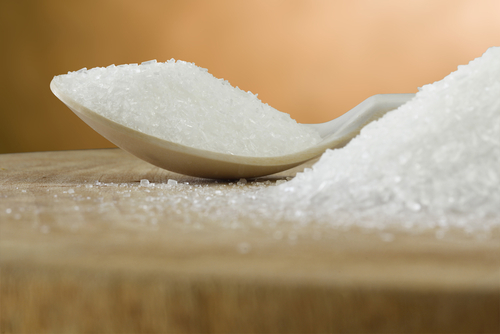
Photo: Shutterstock
For nearly 50 years now people have been led to believe that food containing monosodium glutamate (MSG) is somehow bad and should be avoided. Since so much food packaging often advertises “No MSG” or “No added MSG”, consumers may be getting that message without being aware of exactly why it is considered bad. The complaint is that some people who eat food with added MSG have an allergic reaction resulting in symptoms such as headaches, nausea, sweating or numbness. However, decades of scientific research has not come up with any conclusive evidence that added MSG causes either allergies or any long term harm to people. Could the MSG scare be based on a myth?
How did MSG get a bad reputation?
The debate on the effects of MSG on health have been traced back to 1968, when a letter to the New England Journal of Medicine described a phenomenon that was labeled “Chinese restaurant syndrome”. This referred to the supposed ill-effects felt by people after consuming Chinese food. The writer asked whether there could be a link between consumption of MSG, commonly found in Chinese cuisine, and these reactions.
MSG is added to food because it enhances umami, a term from Japanese that is used to refer to the savoury flavour of food. A Japanese food researcher was able to extract glutamate, the “g” in MSG, from sea kelp in 1908, and identify it as the ingredient that adds umami. This explains why MSG has been so strongly associated with East Asian cuisine.
Over time, the term “Chinese restaurant syndrome” caught on, as more and more people claimed to have experienced similar symptoms after eating East Asian food. However, the allergic link to MSG in Chinese food was only speculation.
What is the evidence against MSG?
There isn’t much. Simon Oxenham, who blogs extensively about neuroscience and psychology, wrote in Big Think that studies which found that people had allergic reactions to MSG were “all small, uncontrolled, and unblinded, allowing the participants’ expectations to impact the results.” Other studies, in which participants did not know the purpose of the research and were randomly assigned to ingest either MSG or a placebo, found no difference in symptoms between participants who ingested MSG and those who did not.
One research paper from 2009 that reviewed many other studies found that “decades of research have failed to demonstrate a clear and consistent relationship between MSG ingestion and the development of these conditions [asthma, rashes, inflammation of the nasal passages].” On the other hand, it is true that one report commissioned by the US governments Food and Drug Administration (USFDA) in the 1990s found that when people consumed 3 grams of MSG alone, without any other food, some of them did report mild adverse symptoms. However, a typical serving of food with added MSG would contain less than 0.5 grams of the additive, so it would take six servings to ingest that amount, which is not typical.
Is MSG an artifical chemical?
What many people may not know about MSG is that it can be found naturally in many food items, particularly tomatoes, broccoli, mushrooms, peas and walnuts. This form of MSG is usually referred to as just glutamate. Derived foods, such as parmesan cheese and soy sauce, are very high in glutamate. Human bodies also extract from proteins, and the USFDA states that “the glutamate in MSG is chemically indistinguishable from glutamate present in food proteins.”
What are the regulations for MSG?
The government Food Safety and Standards Authority of India (FSSAI) allows the use of MSG in three product categories: “Culinary Paste/Other Sauces”, “Soups”, and powders that are used as flavourings. It also lists 51 foods to which MSG may not be added, including any food meant for an infant under 12 years of age. MSG is allowed as a seasoning for pasta and noodles. There is no limit on how much MSG may be added, beyond following “good manufacturing practices.”
Are there any benefits to MSG?
Surprisingly, given all the controversy, yes. MSG may actually provide health benefits to some people. For one thing, foods that naturally contain MSG, such as brocolli, provide many necessary nutrients. Additionally, since glutamate enhances flavour, it could help people who are suffering from loss of apetite due to age or illness. It also makes some food taste better in noisy airplanes.
So should you eat foods with added MSG?
It’s a personal decision, like eating organic or genetically modified foods. The research says MSG is not harmful. For some people, however, no amount of research may convince them that MSG is not harmful or toxic. Even after hearing the science some people insist that it gives them a headache, a burning sensation in their throats or other symptoms. Fortunately for those people, the current labeling regulations mandate that any food to which MSG has been added must mention that in the ingredients, and if MSG occurs naturally in any of the ingredients, the packaging may not say “No MSG” or “No added MSG”.
This brings us back to why the “No MSG” labeling is added in the first place. While any company that does not follow the regulation on this rightly deserves to be corrected by the authorities, given the absence of evidence that MSG is harmful, maybe food manufacturers can stop using the absence of MSG as a marketing ploy.
This article contains MSG, let us know if it gave you a headache. Leave a comment below. Please like FamiLife’s page on Facebook so that you get all our articles and others may find us.
